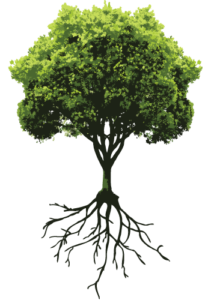
The Decision Tree – Delegation of Decision Making

The Decision Tree
I first learned about the decision tree a while back while reading, “Fierce Conversations” by Susan Scott and I became infatuated with her super simple method of delegating decision making to employees. I went so far as to use this same concept with my kids when discussing who they should allow to make decisions on their behalf and how I want them to make decisions on my behalf.
- Leaf level decisions. A single leaf on a tree can be plucked without consequence, allowing people to make leaf level decisions on regular basis allows us to evaluate their decision making ability. Leaf level decisions are those that if they go wrong have very little consequence to the organization as a whole. Generally a good rule with a leaf level decision is, “Make the decision, no need to report it.”
- Branch level decisions. Much like leaves, an entire branch of a tree could sustain damage and eventually grow back just as strong as it once was. A branch level decision is an increased level of trust but still allows for a great autonomy. A good way of wording authority to make branch level decisions is, “Define the problem, make the decision, then act on it. Let me know what you chose to do, why you chose to do it, and what the outcomes were.”
- Trunk level decisions. The trunk of a tree can sustain only minor damage before the entire tree is lost. Anyone making decisions that affect the trunk of a tree must have absolute trust and typically cannot make the decision without consulting others. A way of wording trunk level decision authority is, “Define the problem, develop a solution, make the decision, but, discuss with management and gain approval, then take charge and implement the solution.”
- Root level decisions. The roots of a tree, like an organization are an interwoven, complex source of life. Without strong roots there is very little chance of survival. Therefore, a root decision is a centralized one and although others may be involved in the decision making process the ultimate decision rests with the person or people at the top of the chain, those who stands the most to lose; the owner, the board, the family, etc. One way of wording root level decision authority is, “when a decision must be made that the outcome of which will decide the future of this organization we will discuss it and perhaps even make it as a team. But, ultimately as the owner of this company / chief of this department / board of directors, the final decision rests with me (us) and after considering all there is to be said on the matter I (we) will take sole responsibility for deciding on a course of action.”
The decision tree is a simple, but effective way of delegate decision making authority to members of any organization. We can use it to clearly articulate major concepts such as protecting brand identity (a root level decision) to what size font to use in an email (a leaf level decision).
